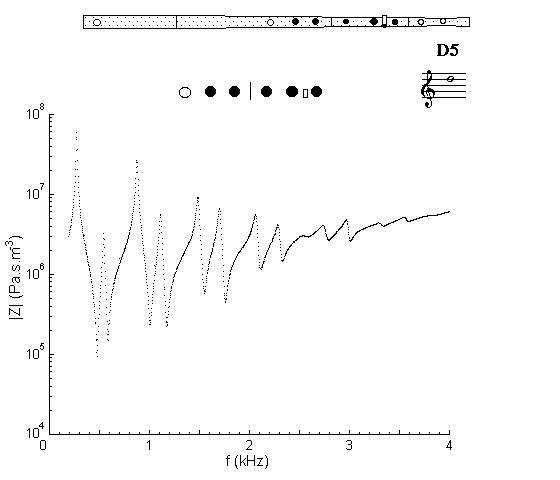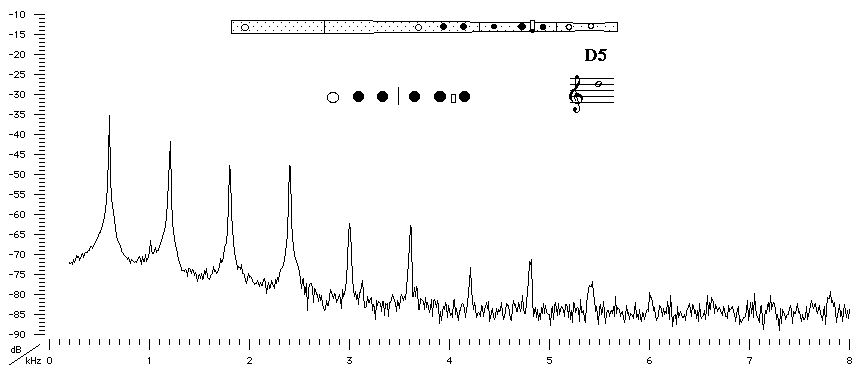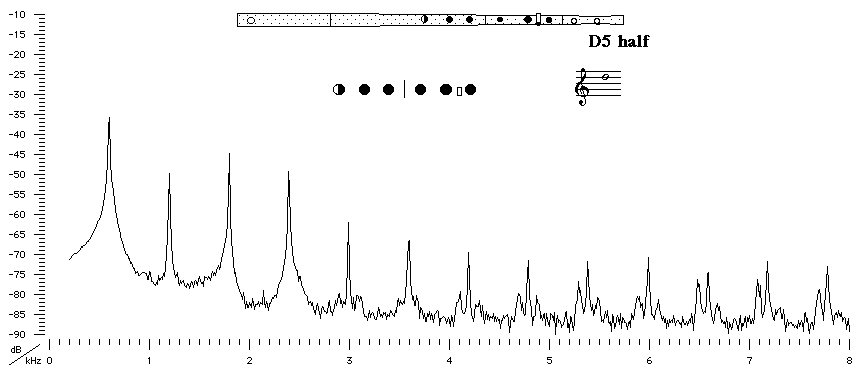| Acoustics of baroque, classical and modern flutes |
classical flute
|
D5 |

|
Acoustic and Fingering Schematic Non-specialist introduction
to acoustic impedance |
This fingering is comparable to that for D4 except for the open register hole. This creates a pressure node (or flow antinode) at the midpoint of the pipe, and thus allows D5 but not D4. Compared with the D4 impedance spectrum, the low frequency minima are less deep, and at considerably higher frequency.

Sound spectrum
of a classical flute with a flared foot played using fingering for D5.
![]()
![]()
![]()
![]()
![]() You can hear D5
played by Geoffrey Collins.
You can hear D5
played by Geoffrey Collins.
Half Vented Fingering |
classical flute flared foot |

Sound spectrum of a classical flute with a flared foot played using half vented
fingering for D5.
![]()
![]()
![]()
![]()
![]() You can hear D5 played with half vented fingering by Geoffrey Collins.
You can hear D5 played with half vented fingering by Geoffrey Collins.
| Acoustic measurements are available for these flutes - modern B, modern C, classical C, classical D, classical flared, baroque Sound clips are available for modern B, classical flared and baroque |
To compare flutes, it is easiest to open a separate browser window for each instrument. |